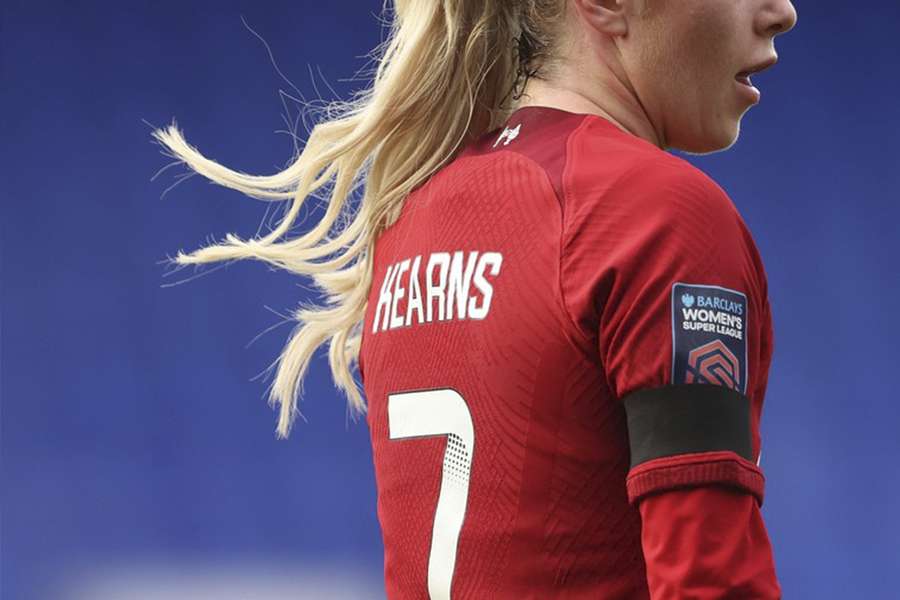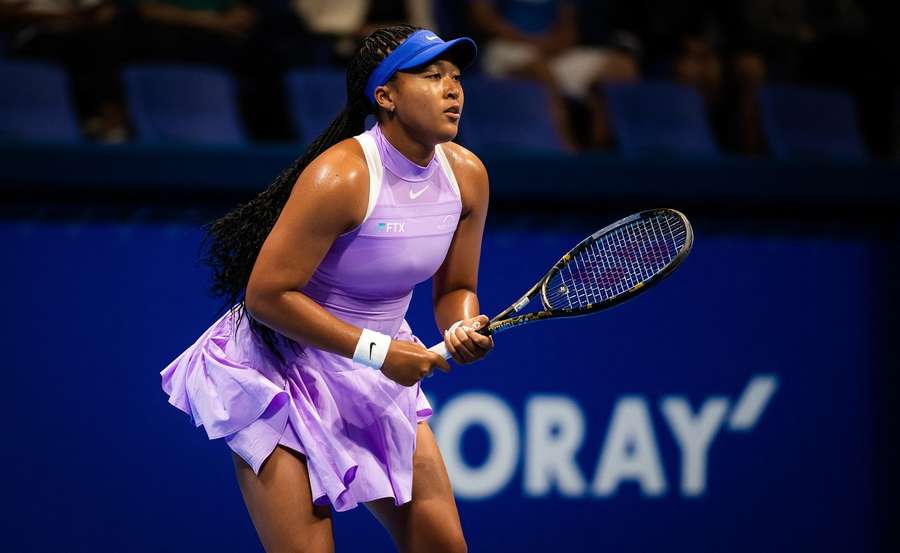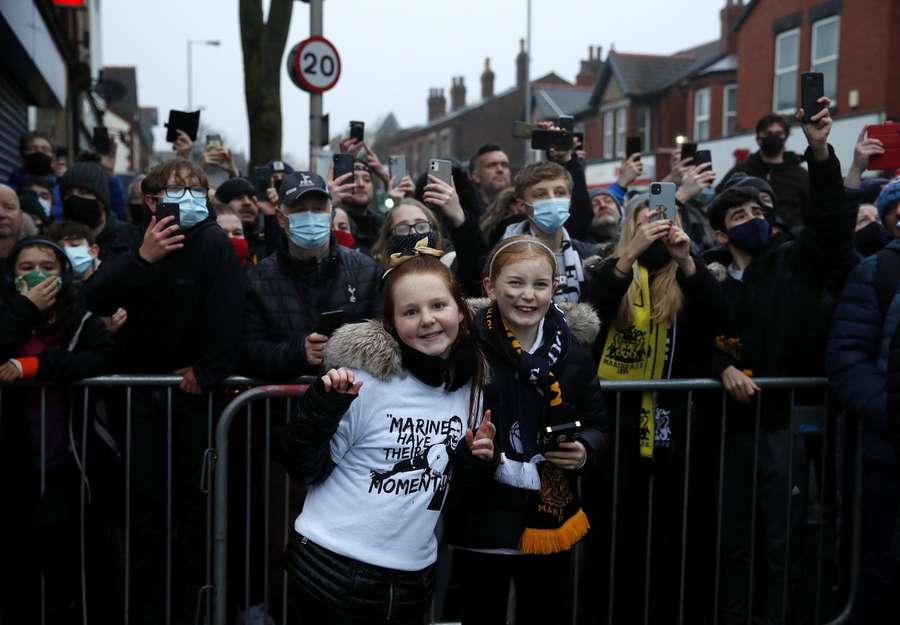Gender disparity in sport: Pay gap, business and how to fix football

Both tennis superstars benefit from huge off-field partnerships, but their on-field earnings aren't to be sniffed at.
Osaka is the highest-paid female athlete of all time, according to Forbes, picking up $2.3 million for her on-court efforts.
Williams isn't terribly far behind on $900,000, but it's the duo's off-court ventures that see them bank some serious money.
Including off-field earnings, Osaka picked up around $57.3 million (before tax) in 2022 and Williams earned $45.9 million.
Two huge numbers to be sure, but it's a significant drop from this peak - which continues as we descend down the list.
Venus Williams, another tennis star, picked up $11.3 million last year. But only $300,000 of that was earned on-court. The 41-year-old may be an anomaly, though, as she benefits from appearing alongside her sister a lot of the time.
Here's a breakdown of the world's top 10 highest-paid female athletes:
Naomi Osaka: $57.3m ($55m off-the-field)
Serena Williams: $45.9m ($45m off-the-field)
Venus Williams: $11.3m ($11m off-the-field)
Simone Biles: $10.1m ($10m off-the-field)
Garbine Muguruza: $8.8m ($6m off-the-field)
Jin Young Ko: $7.5m ($4m off-the-field)
P.V. Sindhu: $7.2m ($7m off-the-field)
Ashleigh Barty: $6.9m ($3m off-the-field)
Nelly Korda: $5.9m ($3.5m off-the-field)
Candace Parker: $5.7m ($5.5m off-the-field)

Tennis an example to follow
Tennis players (in bold above) dominate the list of highest-earning female athletes, so for the sake of comparison let's look at their top few male counterparts in Forbes' rich list...
Roger Federer: $90m ($90m off-court)
Rafael Nadal: $31.4m ($25m off-court)
Novak Djokovic: $27.1m ($20m off-court)
Daniil Medvedev: $19.3m ($12m off-court)
These figures are fairly comparable, with on-court earnings relatively reflective of individual ability and off-court revenue boosting overall numbers.
Tennis is somewhat of an outlier in that it hasn't really been male-dominated, though. Since the mid 1800s, female representation in the sport has been strong.
The popularity of both male and female players is more or less equal, which is reflected in on-court earnings, however coverage hasn't been fair throughout the years.
Golf isn't far off (kind of)
According to Statista, there are three female golf players who earn over $20 million per year - Annika Sorenstam ($22.58m), Karrie Webb ($20.27m) and Cristie Kerr ($20.11m).
The LIV Golf tour in Saudi Arabia has made it practically impossible to compare the earnings of the top female and male golf players around the world.
More indicative of Saudi issues, LIV Golf is presently exclusively to male golfers. Rumours suggest that may change further down the line, however.
For the sake of argument, here's the top three male earners in golf, as per AS in Spain...
Phil Mickelson: $138m
Dustin Johnson: $97m
Bryson DeChambeau: $86m
We can't just exclude the Saudi game, but if we focus on where female golf players are currently able to partake in tandem with their male counterparts, the numbers become less bleak.
Here's the top three male earners in golf (excluding LIV), as per AS...
Rory McIlroy: $20.65m
Scottie Scheffler: $19.54m
Tiger Woods: $15.06m
Golf is similar to tennis in that for a long time it has been a sport that isn't dominated by men, despite a skew in popularity and coverage toward the men's game.
The LPGA was set up just 30 years after the PGA in the USA, championing the women's game.
Viewership
This is around the time viewing and live attendance figures need to be considered.
Let's start with golf - the final round coverage of the Women's PGA Championship last year earned 840,000 viewers on NBC, as reported by Sports Media Watch. Contrastingly, 2022's Bryon Nelson tournament, part of the PGA Tour, averaged just over 2,300,000 viewers on ESPN.
Pivoting to tennis - an average of 4,600,000 people tuned in to watch Serena Williams v Ajla Tomljanovich at the US Open last year, setting a new record for ESPN's tennis coverage.
For the men, an average of 2,960,000 people tuned in to watch the semi-final between Carlos Alcaraz and Frances Tiafoe. These are both the highest-performing figures of the US Open, but it has to be noted that it was expected that it would be Williams' last tournament.
That said, Williams' match against Tomljanovich would almost certainly have drawn in the largest numbers regardless. In 2018, her match against Naomi Osaka attracted 50% more viewers (3.1m) than the men's final (2.05m) that year.
These numbers are quite exciting, as it indicates that all competing athletes at an elite level - male or female - have similar financial opportunities.
The big one: Football
One of the reasons many people would have found the title of this article eye-catching is, of course, the biggest sport in the world - football.
Women's football, in terms of popularity and the opportunity to watch matches on TV, has come on in leaps and bounds in recent years.
But while the men earn frankly vomit-inducing amounts of money at the very top (Lionel Messi had income exceeding $120m in 2022), women at the top earn a fraction of what their male counterparts pick up.
There are many reasons for this - and not to justify the wages men in football receive - but there is a bit of nuance that needs to be recognised.
This is where the previously established rosy picture tennis and golf presented becomes murky.
Popularity and business
Something that has to be taken into consideration is the number of spectators at events.
Social commentators often look at the top level of the male and female game of football, but it would be unfair to compare - the male side is the most popular spectator spectacle in the world.
But that's not a slight at the female side of the game; men's football simply dwarfs everything else. Let's take a look at some numbers...
The figures are still being crunched for the 2022 World Cup final in Qatar, but we can take a look at the previous iteration of FIFA's flagship tournament.
World football's governing body claims over a billion people watched the 2018 final, which obliterates the viewing figures of even the NFL's Super Bowl (around 140 million, as per Nielsen Media estimates).
But the Super Bowl is an annual event, whereas the World Cup is every four years. Fair enough, let's take a look at UEFA's Champions League final.
In 2021, an estimated 700 million people watched Chelsea beat Manchester City - a notably high figure as UEFA's flagship event typically pulls in around 400 million viewers, which is still three-fold what the Super Bowl brings in.
As we can see, the biggest events in football (association, that is) attracts significantly more eyes than what is often considered somewhat of an equal (the Super Bowl).

With that in mind, let's take a look at some figures relating to the pinnacle of the female game.
The 2019 Women's World Cup was watched by an estimated 260 million people, as per FIFA's own estimates, which is up 56% on the 2015 edition.
Again, this is a tournament held every four years, so let's take a look at the Women's Champions League. According to Insider Sport, the final in 2022 was watched by 3.6 million people - a 56% increase on the previous year, a trend that should carry a lot of weight in future sponsorship dealings.
In-person attendance
Now, we'll tighten our scope to football in the England.
When live TV coverage of the men's FA Cup swings around each year, fans of clubs lower down in the pecking order often complain that Premier League outfits are given preferential treatment.
They're justified in this argument and the reason it's a tricky issue is because exposure can be so important to teams not at the pinnacle of the game.
It helps them appeal to a wider audience, which is then hopefully reflected in an increase of tickets at the gate each week.

It's not a perfect measurement, but one direct comparison we can make is the amount of in-person spectators at events - in both men's and women's football.
If we take a look at the Women's Super League (abbr. WSL; first tier) - the average attendance this season is around 6,000, according to Sportcal.
To find an equivalent in the men's game, we have to drop down to League Two (fourth tier) - where the average attendance is about 5,800 this season.
Football and the gender pay gap
According to Reach (plc), the average WSL player earns a touch over £30,000 per year, but wages can be as low as £20,000 and the most affluent clubs may pay their best players well over £40,000.
And this is where we see some inequality. The average League Two player reportedly earns around £115,000 per year, but there are players on less than half of that and a few on considerably more. Both of these figures exclude sponsorships and anything else off-field.
Naturally, this creates a problem for female athletes getting into football - if even at the highest level you could earn a wage which is less than what a typical supermarket location manager picks up, then wholly applying yourself becomes less realistic and, if we're being honest, appealing.
An argument could be made that parent clubs in the women's top flight - including giants like Liverpool and Manchester United - could and should pay better wages as way of investment.
However, there is some redemption within the national teams - both men and women representing England, Wales and Northern Ireland earn the same match fee, with Scotland expected to soon follow.
Cost and demand
Sticking with the WSL and League Two comparison, there are 12 teams in the women's top flight and 24 in the men's fourth tier, which means the men play twice as much with the same crowd.
When applying this to the cost of tickets, the picture becomes a little more clear. It costs roughly £10 for an adult match-day ticket to a WSL match, but a League Two fixture would set you back around £15.
Obviously these figures vary from team to team, and even week to week, but it helps show that - despite similar attendance figures - the men's fourth tier is more profitable than the very pinnacle of the women's game in England.
And 'profitable' is a key word here. Football, as suggested further up in this writing, and like all modern sports to some degree, is a business. It has become increasingly more about image and relationships with other for-profit entities, and less about the athletes and fans who breathe life into the 'industry'.
Climbing the ladder
It's difficult to compare male and female football players because the further up the pyramid you go on the men's side, the more imbalanced it becomes.
But scaling the men's game down to about the level of the women's, purely in terms of attendance figures (WSL v League Two), doesn't give us any definitive solutions.
Men's football in England (from Premier League to non-league) has a storied history, propped up by the patriarchy that saw it as a game to be played by men.
The FA was set up in 1863, but it wouldn't be until the early 1920s before the women's game would gain some real traction.
Notably, the FA banned women from playing on pitches used by men until between 1921 and 1970 - a hostile action that ultimately served to hamper development.
We now live on a more level surface, where young girls playing football is more popular and 'seen' than it was even as recent as 20 years ago.
Is it perfect? Absolutely not, there's so much progress to be made. Does this justify men in League Two earning roughly four-fold what women in the WSL earn? Not entirely, but the 'supply and demand' factor should be considered.
What next?
One of the key ingredients to continued progression in elite sport is expansion, and women's football probably should take that step next as there are just 12 teams in each of the top four divisions (a total of 48).
By contrast, there are 44 teams in the top two divisions of men's football and a total of 92 across the top four.
As discussed, male football players in England's fourth tier can earn four times that of some of the best female footballers. You'd have to go down to the men's semi-professional game to find similar wages.
Sponsorships and the general business side of things play a huge role here, it should be noted - as well as the amount of fixtures played in a full season.
But while the top four tiers of men's football has such wealth, there is an immediate drop-off when looking down the female game's ladder.
In the women's second tier, it's not at all uncommon for players to have secondary jobs to supplement their income as the wages they receive from their clubs can't fully support them.
A lesson from the USA
If we broaden our scope a little, basketball is also worth noting. Men in the USA earn vastly more than the women, but again this is mainly down to the popularity of the men's teams over the women's.
According to ESPN, the most well-off NBA players will generally garner over $40 million per year and the organisation's lowest earner will pick up a little over $1 million, as of this season.
Contrastingly, according to analysis by Bloomberg, female players in the WNBA earn between $130,000 to $230,000 per season - but it's noted that the best players can earn up to $750,000 through sponsorships and the women's season is much shorter than the men's.
Albeit not perfect, the monetary gap in American basketball is closer than it is in elite football in England, which is helped particularly by the identity of the women's teams.
Although previously seen as their 'sister team', the Los Angeles Sparks do not play under the Los Angeles Lakers' name or crest.
While it would be unusual for a football team in England to be named 'Sparks' or 'Lakers', perhaps Liverpool's women's team, for example, being rebranded to 'Liverpool Sparks' with a unique crest could help the women's team climb out of the male team's shadow.
That said, most of the teams in the WNBA are independent (not associated with any NBA team (as of 2014 neither are LA Sparks)) and that absolutely works to their advantage too.
And while we're talking about the USA; the BBC reports its National Women's Soccer League has its top players on more than £420,000 per season.
Conclusion
Writing this feature and conducting the research for it has felt somewhat like putting together an essay, so let's round off with a conclusion...
Addressing the main point of this writing - there is no one thing that will fix the imbalance between male and female footballers.
This is mainly beause it's almost like two different sports. While both sets of players are technically carrying out the same job, there is a history behind men's football teams that very few others can compete with in any sport - male or female.
In tennis and golf, it's a little bit easier because these people are individuals and play for themselves (with sponsorships), they are what investors are interested in
It appears gender pay gap issues haven't been quite as insurmountable than other sports in tennis and golf because of the storied history women have in them both. Couple this with the fact that these athletes play for themselves and not a club and we've arrived at another juncture that's likely made this possible.
If we take a look at the most popular female football teams, many of them are associated with popular football clubs that were previously male-only (Liverpool, Man Utd, Spurs, etc). While this offers an immediate boost due to association, it does present a sort of glass ceiling for women's football.
To empower women's football, and indeed this could apply to almost every team sport around the world, the best bet is for fans to attend local events and support the team.
It seems obvious but if the gates at football fixtures increase and more money in spent at the club, further investment is possible and indeed more attractive from a business perspective.
This would then have a snowball effect, which could see more demand and competition in the women's game. This in turn should also see an increase in wages for female football players. Ideally, this trend would then find its way down to the lower leagues, meaning there could be more development to the grassroots level of football for young aspiring female players.
But for demand to increase, women's football has to be seen...
- Although you can now watch WSL fixtures fairly easily in England, broadcasters should take on more responsibility to shine the limelight on the women's game.
- Alongside that, there needs to be a strong and continuous grassroots movement for women's football to ensure continued growth.
- But while football has so many fans in general, many of the long-time supporters view female teams in a similar light as their club's reserve side.
These are three of the biggest issues in women's football (which could be applied to other sports) - it presents a glass ceiling, so trying to 'make it' as a female football player isn't as realistic as it is for aspiring male athletes.
A talented male football player could find himself in the English fifth tier and earn the same wage as the very best female footballers in England.
Combine that with the fact that there is much less women's football to watch as a consumer and it creates an environment in which becoming a successful female football player isn't as appealing as it should be.
Cut to the chase
There's so much room for more progress for parity in football, and certainly more research is needed as information on the grassroots level of the female game is much harder to find than that of male football.
This sentiment can be applied across the board - be it football, rugby, basketball, or any other sport. The interest is there, it just needs to be facilitated and nurtured.
For women's football in England, lessons in identity could be learned from women's basketball in the USA, but it boils down to an increase in match-day attendance and exposure from broadcasters.

